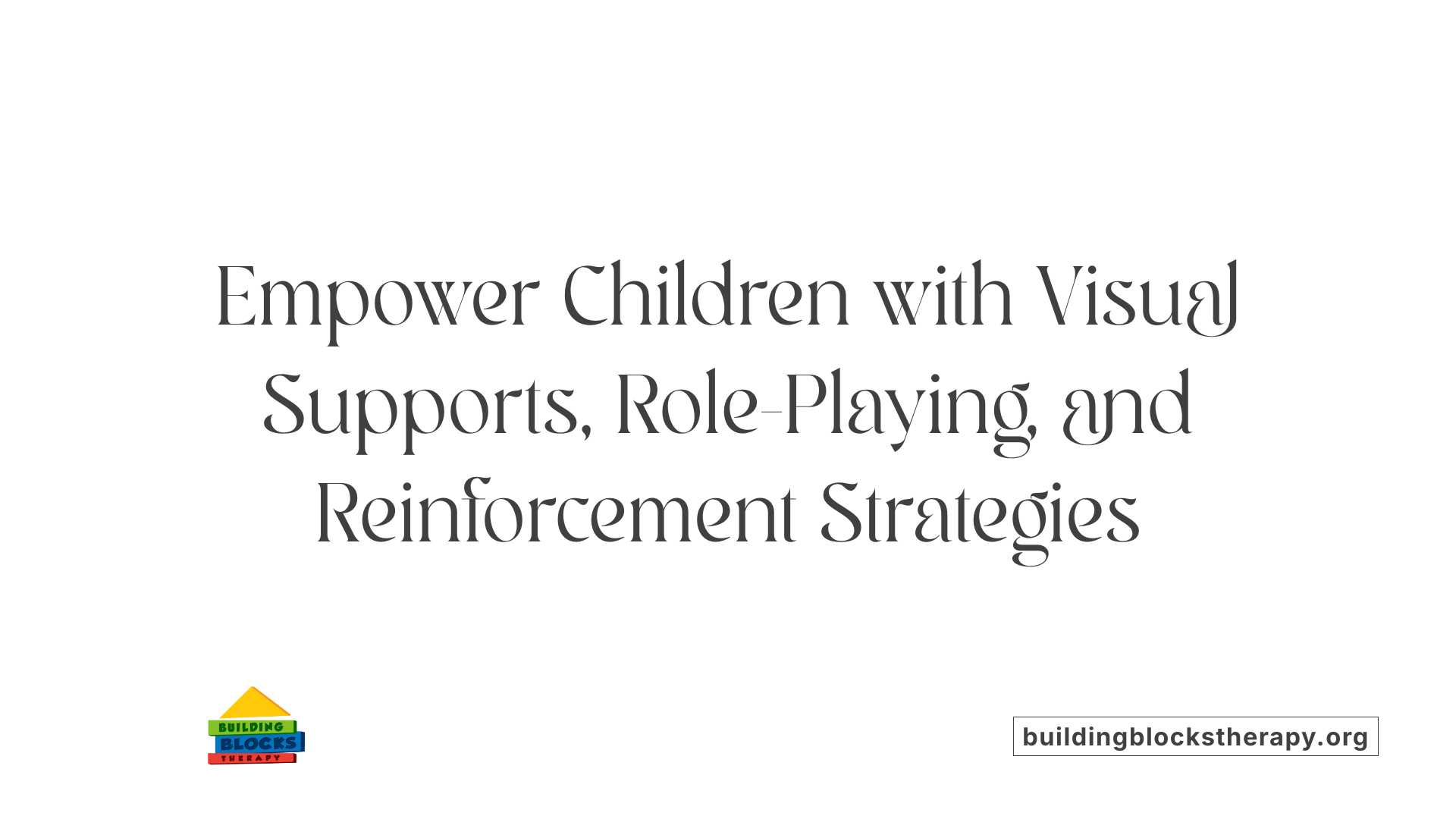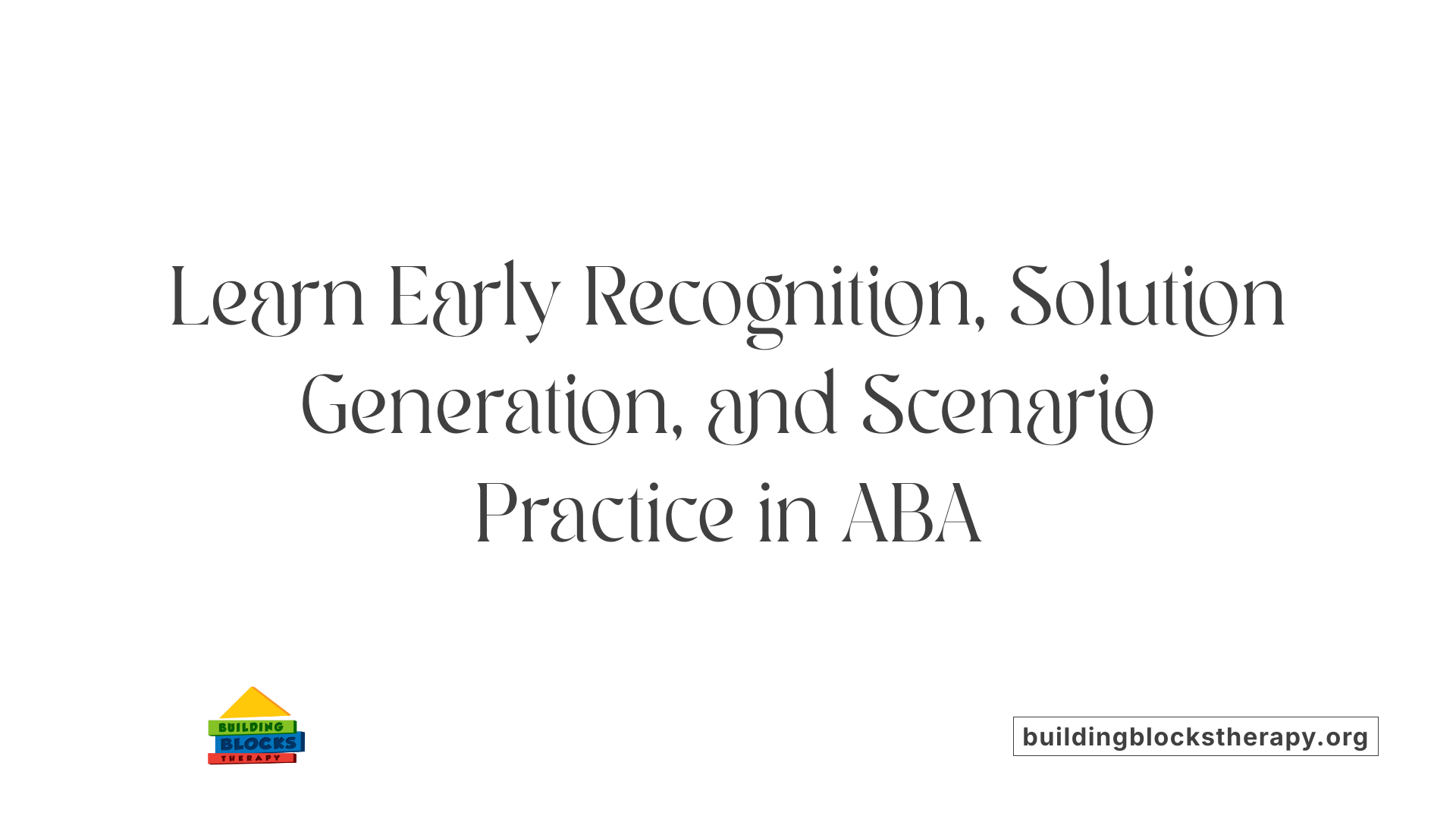How ABA Therapy Encourages Problem-Solving Skills in Children with Autism
Unlocking Potential: The Role of ABA in Developing Problem-Solving Skills in Autism

Understanding ABA Therapy and Its Impact on Autism
Applied Behavior Analysis (ABA) is a scientifically validated approach that has transformed the way children with autism develop essential life skills. Recognized globally for its efficacy, ABA therapy focuses on reinforcing positive behaviors and reducing challenging ones through tailored interventions. Its systematic techniques empower children to navigate social situations, communicate effectively, and most importantly, solve problems independently. This article explores how ABA therapy fosters problem-solving abilities, the strategies employed, and the long-term benefits for children on the autism spectrum.
Core Techniques and Frameworks in ABA for Problem-Solving Development

How does ABA therapy support the development of problem-solving skills in children with autism?
ABA therapy plays a significant role in helping children with autism develop effective problem-solving skills. It employs a variety of evidence-based approaches adapted to each child's unique needs. One essential method is task analysis, which involves breaking down complex problems into smaller, manageable steps. This step-by-step approach helps children learn to identify issues, consider possible solutions, and evaluate the outcomes, fostering independence.
Positive reinforcement is another cornerstone of ABA. When children successfully implement problem-solving strategies, they earn rewards such as praise, tokens, or preferred activities. This reinforcement encourages persistence, effort, and confidence in tackling new challenges.
Modeling and prompting techniques also support skill acquisition. Therapists and parents demonstrate solution strategies through role-playing or visual cues, providing children with clear examples to imitate. Prompting gradually fades as children become more competent, promoting autonomous problem-solving.
Furthermore, ABA emphasizes Natural Environment Teaching (NET), which embeds learning within everyday activities. This contextual approach helps children generalize problem-solving skills across different settings, including home, school, and community.
ABA's focus on functional communication is vital for effective problem-solving. By teaching children to express their needs and ask for help through gestures, speech, or communication devices, it reduces frustration and enhances their ability to navigate challenges.
In addition to behavioral techniques, ABA incorporates emotional regulation strategies, such as teaching children to recognize and manage emotions. This helps them stay calm and think clearly when faced with problems.
Research supports these methods, showing that incorporating visual supports like pictures, flowcharts, and social stories can improve understanding of problem-solving processes. These resources help children visualize steps, understand consequences, and develop resilience.
By integrating these techniques, ABA therapy fosters not only specific problem-solving skills but also overall cognitive flexibility. This comprehensive approach enhances children's independence and quality of life, empowering them to handle everyday challenges confidently.
Techniques and Strategies to Promote Problem-Solving Abilities

What techniques and strategies are used in ABA therapy to promote problem-solving abilities?
ABA therapy focuses on equipping children with autism with the skills needed to solve problems and navigate complex social and functional situations. To accomplish this, therapists employ a variety of effective techniques and strategies.
One fundamental approach is breaking down complicated tasks into smaller, manageable steps through a process called task analysis. This helps children understand and master each component before moving on to the next, building confidence and competence.
Visual supports play a crucial role in aiding understanding. These include pictures, flowcharts, checklists, and visual schedules that clarify steps and expectations. Visual supports make abstract concepts more concrete, facilitating better comprehension of problem-solving processes.
Structured teaching methods create consistent opportunities for children to practice problem-solving skills in different settings, and include approaches like Discrete Trial Training (DTT), Natural Environment Teaching (NET), and Pivotal Response Treatment (PRT). These methods involve systematic teaching sessions where desired behaviors are reinforced, and skills are generalized across environments.
Role-playing activities, social stories, and video modeling are powerful tools in ABA. Role-playing allows children to practice social problem-solving in simulated scenarios, while social stories help them understand social cues and appropriate responses. Video modeling demonstrates problem-solving behaviors, enabling children to observe and imitate effective strategies.
Reinforcement strategies are essential in motivating children to utilize problem-solving skills. Positive reinforcement involves rewarding desired behaviors, which encourages repetition. Functional communication training, a specific reinforcement strategy, teaches children to express their needs effectively, minimizing frustration and promoting adaptive problem-solving.
| Technique/Strategy | Description | Example Use | Typical Application |
|---|---|---|---|
| Task Analysis | Breaking tasks into small steps | Completing a puzzle by assembling pieces | Teaching daily routines and problem-solving steps |
| Visual Supports | Using images and flowcharts | Using pictorial guides for crossing the street safely | Clarifying complex instructions |
| DTT & NET | Structured and natural teaching methods | Repeating problem-solving exercises in various settings | Teaching functional skills systematically |
| Role-Playing & Social Stories | Practicing social interactions | Navigating a disagreement through role-play | Developing social and emotional problem-solving skills |
| Video Modeling | Demonstrating behaviors on video | Watching a video of a peer resolving a conflict | Learning new social problem-solving strategies |
| Reinforcement Techniques | Rewarding positive behaviors | Giving praise or tokens for solving a problem | Encouraging independent problem-solving |
By integrating these approaches, ABA therapy helps children develop critical problem-solving skills that are essential for their independence and success in daily life. Strategies such as visual supports and structured teaching make concepts understandable, while role-playing and reinforcement foster confidence and motivation.
Parents and caregivers are encouraged to reinforce these skills at home by implementing similar strategies—using visual aids, engaging in role-play, and offering rewards for problem-solving efforts—thereby promoting generalization across different environments. This comprehensive approach ensures children with autism gain vital skills that foster greater independence, social confidence, and overall quality of life.
Benefits of ABA in Enhancing Problem-Solving and Decision-Making

What are the benefits of ABA therapy in enhancing problem-solving and decision-making skills in children with autism?
ABA therapy provides several advantages that help children with autism develop vital problem-solving and decision-making abilities. One of the main benefits is the structured approach ABA uses to teach children how to handle challenges. Therapists break down complex problems into smaller, manageable steps, allowing children to learn systematic ways to analyze and approach different situations.
Reinforcing positive problem-solving behaviors is another crucial aspect. Through consistent reinforcement of successful attempts, children are encouraged to apply these skills repeatedly, increasing their confidence and independence. This positive feedback guides children to understand which strategies work best, fostering a proactive attitude towards challenges.
ABA also emphasizes developing coping strategies and decision-making skills. Children are taught techniques such as visual supports, social stories, and role-playing. These tools help them navigate emotional and social hurdles effectively, making thoughtful choices in everyday situations. For example, visual flowcharts help children understand the sequence of actions needed to resolve a problem or make a decision.
Engagement in targeted activities enhances critical thinking. Tasks such as sorting, matching, and sequencing require children to think critically and plan their actions. This not only improves cognitive skills but also boosts their ability to adapt and find solutions in real-life scenarios. Therapists tailor these activities according to each child's needs, ensuring they receive appropriate challenges to promote growth.
Supporting communication and adaptive functioning is fundamental to complete problem-solving skills. ABA employs strategies like PECS, sign language, and social stories to improve understanding and expressing needs. Improved communication enables children to seek help, negotiate, and express their opinions, which are vital components of effective problem-solving.
In summary, ABA therapy offers a comprehensive approach that enhances problem-solving and decision-making in children with autism. By fostering systematic thinking, reinforcing positive behaviors, developing coping mechanisms, and improving communication, ABA equips children with the skills needed to navigate their environments more independently and confidently.
| Approach | Techniques Used | Focus Area | Additional Notes |
|---|---|---|---|
| Structured problem-solving | Task analysis, sequencing, breaking down tasks | Complex challenges, planning | Facilitates understanding of steps |
| Reinforcement strategies | Rewards for successful problem-solving behaviors | Motivates repeated use of skills | Reinforces positive actions |
| Skill development activities | Visual supports, role-playing, social stories | Emotional regulation, social understanding | Builds resilience and confidence |
| Critical thinking exercises | Sorting, matching, sequencing tasks | Cognitive development | Promotes reasoning skills |
| Communication support techniques | PECS, sign language, visual cues | Expressing needs, social interaction | Ensures better access to problem-solving |
This multi-faceted approach ensures that children not only learn to solve problems effectively but also generalize these skills across different settings, leading to more meaningful and sustained progress.
Encouraging Problem-Solving Through ABA's Systematic Approach

How does ABA therapy encourage problem-solving in children with autism?
ABA therapy plays a crucial role in developing problem-solving skills for children with autism by using a structured, step-by-step approach. One of the main techniques is breaking down complex tasks into smaller, manageable components through a process called task analysis. This makes it easier for children to understand each part of a challenge and complete it successfully, boosting their confidence.
Reinforcement is another vital element in ABA. Children are encouraged to try solving problems by receiving positive feedback such as verbal praise, tokens, or small prizes when they demonstrate effort or success. These rewards motivate children to engage in problem-solving behaviors repeatedly, leading to stronger skills over time.
Modeling and prompt fading are also essential strategies. Therapists demonstrate how to approach a problem and guide children through solving it with prompts, gradually reducing assistance as the child improves. This process helps children develop independence and internalize the steps needed to tackle new challenges.
Creating structured environments enhances the learning process by providing predictable routines and settings. This layout helps children practice problem-solving in safe, familiar spaces and prepares them to apply these skills in natural contexts.
Furthermore, ABA emphasizes generalizing problem-solving skills across different situations. Through varied activities and settings, children learn to transfer their skills from therapy to everyday life, such as solving conflicts with peers or managing daily routines.
Overall, ABA's systematic approach promotes independence and resilience by teaching, reinforcing, and helping children apply problem-solving strategies in a way that respects their individual needs and paces. This comprehensive process not only improves cognitive abilities but also enhances overall life skills, empowering children to navigate social and daily challenges confidently.
Specific Problem-Solving Skills Taught in ABA

What specific problem-solving skills are taught through ABA therapy?
ABA therapy emphasizes teaching children with autism a broad range of problem-solving abilities that are essential for daily independence and social success. One of the fundamental skills involves identifying problems early. Children learn to recognize behavioral, emotional, or sensory challenges as soon as they arise. This might include noticing signs of sensory overload or frustration and understanding what triggers these reactions.
Once a problem is identified, children are guided to define the issue more clearly. This involves understanding the context and recognizing the antecedents (what happens before the problem) and consequences (what happens afterward). Recognizing these patterns helps children become more aware of the problems they face.
Another important aspect involves brainstorming multiple solutions. Children are encouraged to come up with different ways to handle situations, fostering flexibility and creativity. They are taught to consider various options and weigh their potential outcomes. This approach helps them see that challenges can often be approached from different angles, promoting adaptable thinking.
After generating solutions, children learn to evaluate each option. They examine potential results to determine which solution might be most effective. This critical thinking process helps children develop better judgment and decision-making skills.
A core method within ABA for enhancing problem-solving involves breaking down complex tasks into smaller, manageable steps. These sequences, often called behavior chains, simplify problems and make solutions more accessible. For example, tying shoelaces or completing a multi-step cleaning routine is taught through step-by-step instruction, building confidence and competence.
Scenario-based communication and self-advocacy are also integral. Role-playing social interactions and practicing responses help children navigate real-world social challenges effectively. They learn to express their needs confidently and ask for help when necessary.
Overall, ABA employs structured, evidence-based techniques to help children develop critical problem-solving skills. These include recognizing problems early, generating and evaluating solutions, breaking tasks into smaller units, and practicing real-life scenarios. Such skills foster independence, resilience, and adaptability, equipping children with the tools to handle daily obstacles on their own.
Fostering Independence and Long-Term Success
The comprehensive nature of ABA therapy, with its targeted strategies and individualized approach, significantly enhances problem-solving and decision-making skills in children with autism. By systematically teaching, reinforcing, and generalizing these skills across environments, ABA not only promotes immediate functional improvements but also lays a foundation for lifelong independence and confidence. As children master problem-solving, they gain greater control over their behaviors and social interactions, which translates into improved quality of life and greater participation in community and daily activities. Ultimately, ABA therapy nurtures resilience, cognitive flexibility, and adaptive skills — essential components for thriving within diverse social contexts and achieving personal growth.
References
- ABA Therapy for Enhancing Social Skills in Children with Autism
- How Can ABA Therapy Help a Child With Autism? | UTBS
- Key Life Skills Taught in ABA Therapy for Kids
- Applied Behavior Analysis (ABA) Parent Training: Empowering You ...
- The Role of Play in ABA Therapy: Making Therapy Fun
- Uncovering the Benefits of ABA Therapy for Autism
- An Overview of Problem-Solving Skills in Autism - Silver Swing ABA






